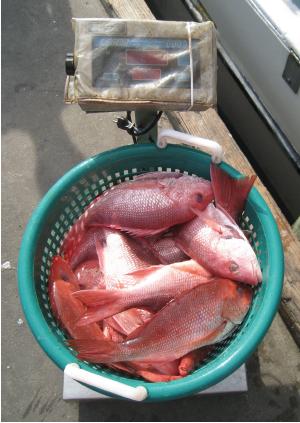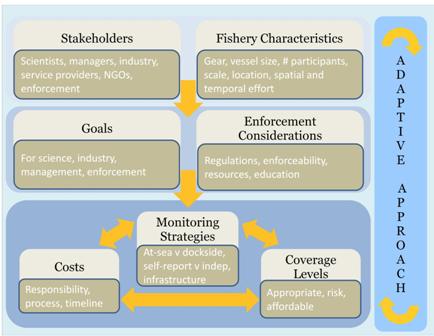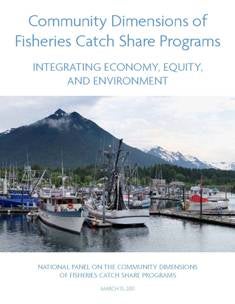
Kate Bonzon, EDF Director of Design Services
Kate Bonzon leads Catch Share Design Services at EDF and authored the Catch Share Design Manual along with her team, Karly McIlwain, Kent C. Strauss, and Tonya Van Leuvan.
Overfishing is the biggest driver of declining fisheries globally, and conventional fishery management approaches have failed to correct this. Conventional management has led to unsafe derby-style fishing, increasingly shrinking fishing seasons, and low market prices all while fish populations in the ocean continue to decline.
We need a different approach.
Catch share management is a solution to overfishing that keeps fishermen on the water and fishing as fish resources recover. Under catch share management, managers establish a scientifically-set, fishery-wide catch limit; assign portions of the catch, or shares, to individuals or groups of fishermen; and hold them directly accountable to stay within the catch limit.
Increasingly, fishery managers and fishermen are looking to catch shares as a locally-designed solution to failed fisheries management (about 275 programs already exist worldwide in fisheries large and small). Identifying the biological, economic and social goals of a fishery and incorporating design elements to meet these goals is critical to the program’s success for fishermen, fishing communities and the resource. As fishery managers and fishermen go through the design process, they have a flexible array of options from which to choose.
But, understanding what options exist and what process works for catch share design has been a key challenge in program development.
Now there’s a dynamic new tool and guide to help improve understanding of catch share programs around the world: the Catch Share Design Center. The Design Center includes several new tools and resources:
- The Catch Share Design Manual, which is the first-ever comprehensive overview and roadmap through the catch share design process, drawing on hundreds of fisheries in over 30 countries and expertise from over 60 fishery experts from around the world. The Design Manual is not prescriptive, but rather, poses a series of questions and highlights frequently used approaches from around the world. It describes a 7-Step process to guide and inform the design of catch shares for commercial fisheries, including four in-depth case studies of fisheries that have implemented catch shares. The case studies provide comprehensive, real-life examples of the design Steps and decisions in action.
- The global database of catch share fisheries allows users to explore and understand the design elements and characteristics for 275 catch share programs worldwide. The database is dynamic, being updated regularly, including with information from viewers or other experts.
- The directory of resources serves as a forum for catch share experts and businesses to connect with fishery managers and fishermen engaged in catch share design and implementation.
- Go Fish, No Fish is a game-oriented teaching tool that illustrates the differences in conventional fishery management and catch shares.
The Catch Share Design Center seeks to provide cutting-edge information and tools to fishery managers, fishermen and others in order to advance the development and implementation of catch share programs. We welcome your participation in this endeavor.




